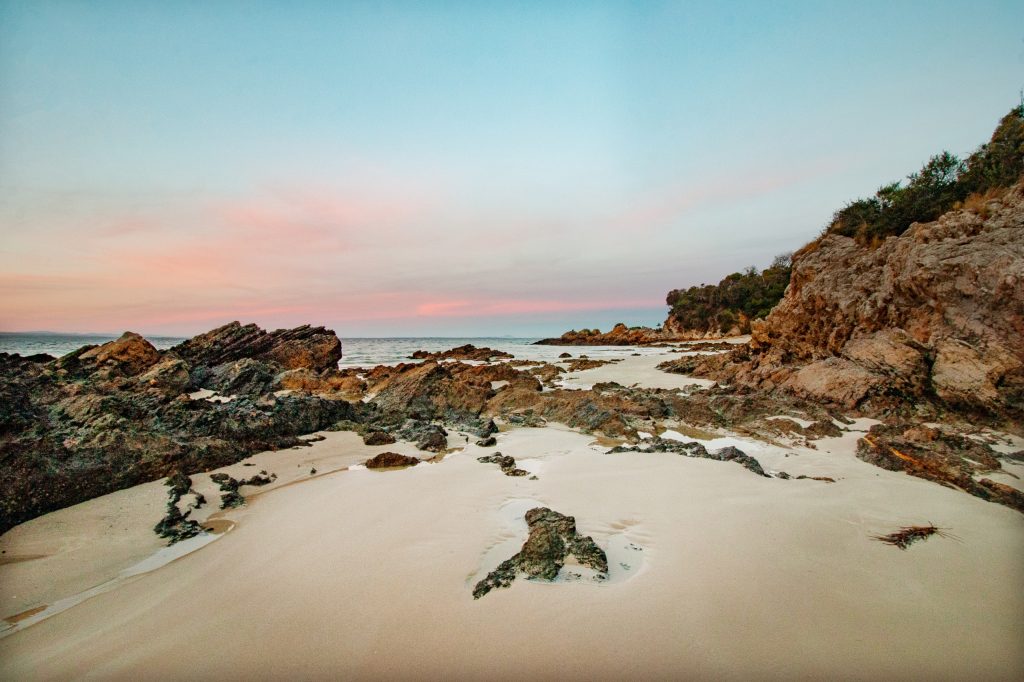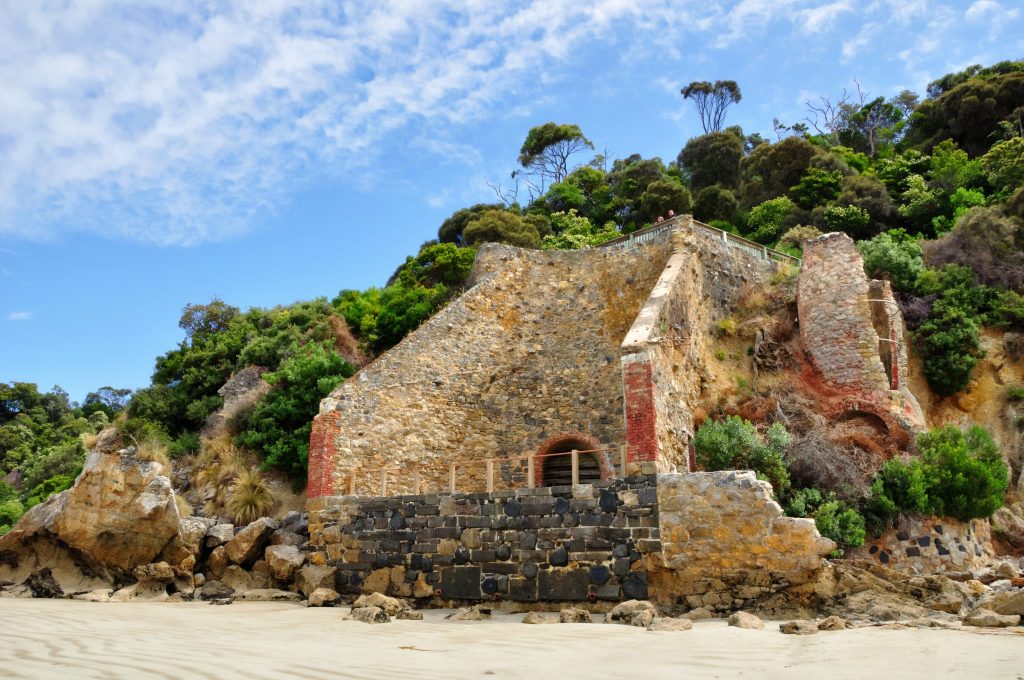Two settlements with one thing in common, their pristine beach beauty.
Extremely secluded, Walkerville South is only accessible by lonely gravel roads and the lack of people ensures that facilities are at a bare minimum.
Walkerville North is accessed by a sealed winding road from the nearby hilltop through beautiful forest down to the shore. Once the road clears the forest at the shore, a gravel road on the immediate left leads to a camping ground, while the sealed road hugs the shore closely for about 500 metres before ending at a boat ramp, providing access to the shores of Waratah Bay. Along this road there are few houses, along with a picnic area and public toilets.
Walkerville North provides beautiful views across Waratah Bay to nearby Wilsons Promontory, and at low tide, provides access to spectacular rock pools.
Approximately 100 metres beyond the end of the boat ramp marks the beginning of a walking trail up the cliff that separates the two Walkerville settlements. This trail leads you through spectacular forests and little creeks stained brown by the tea tree (melaleuca) plants. Along the trail are vantage points with information plaques about the brief mining and logging history of the settlement, and geographical information about the area. A short side-trail takes you to a hidden cemetery, with beautiful headstones of the settlers and workers that battled the tough terrain that is visibly different to that of today.
The gravel road that leads to Walkerville South ends with a similar boat ramp to that of its northern sister settlement, and a sheltered bay frequented in the summer by families swimming, fishing and jet-skiing in the quiet pristine waters.
The small town is now best known for its camping ground ‘Walkerville North Foreshore Reserve’, which consists of a one kilometre stretch of dirt road along the rocky beach with camping sites on either side. The camping ground is at its busiest during the New Year and Easter holidays, attracting many campers.
Things to see and do
Walkerville is located approximately two and half hours’ drive from Melbourne, and can be accessed via Tarwin Lower or Fish Creek.
– The Post Office opened on 10 August 1885 and was known as Waratah Bay until 1892. It closed in 1972.
– Its heyday was the early quarter of the 20th century, where commercial quantities of lime were bagged and exported to the booming capital city. Lime obtained from the site is said to have been used in the building of Melbourne’s iconic Flinders Street Station. Raw material was mined from the surrounding limestone cliffs, loaded into horse-drawn trams and hauled along above the high-tide line to be burned in one of six kilns.
– Much of the surrounding countryside was depleted from a combination of mining and timber-harvesting to fuel the kilns. Burned lime was bagged, then stacked in sheds. Lime was transported to Melbourne aboard a series of ships that stopped at the 300-metre jetty nearby. Operations continued until 1926, when shipping expenses made the product unprofitable.
– Even at its peak, the township was home to only eighty people, mostly workers at the six lime kilns.
-In 2009, all that remains of the limeburning operations is the stonework from ruined buildings and several of the limeburning kilns along with one wooden pile from the once imposing jetty at Walkerville South as well as Digger Island.
– Approximately 190 kilometres south-east of Melbourne
– Examine the remnants of the Walkerville Lime Kilns. The lime kilns operated from 1875 to 1926 and provided lime supplies to Melbourne’s building industry.
– Walk to the historic Walkerville cemetery along the Walkerville North-South Link Track. Length is 750 metres and takes about 15 minutes (one way) to complete.
– Discover secrets from the sea in the coastal rock pools.
– Visit the historic Cape Liptrap Lighthouse (unsealed road).

Walkerville is relatively close to several other townships.

